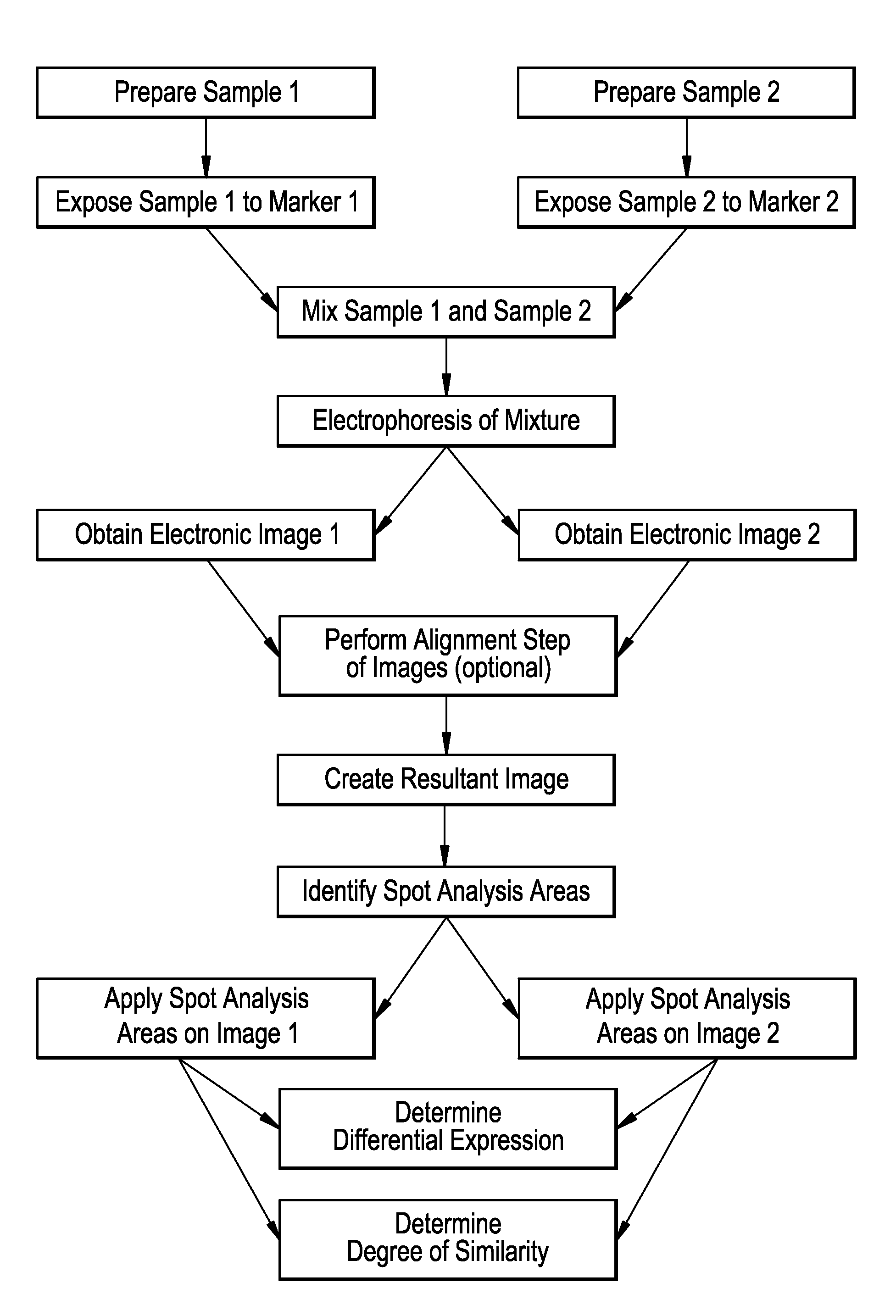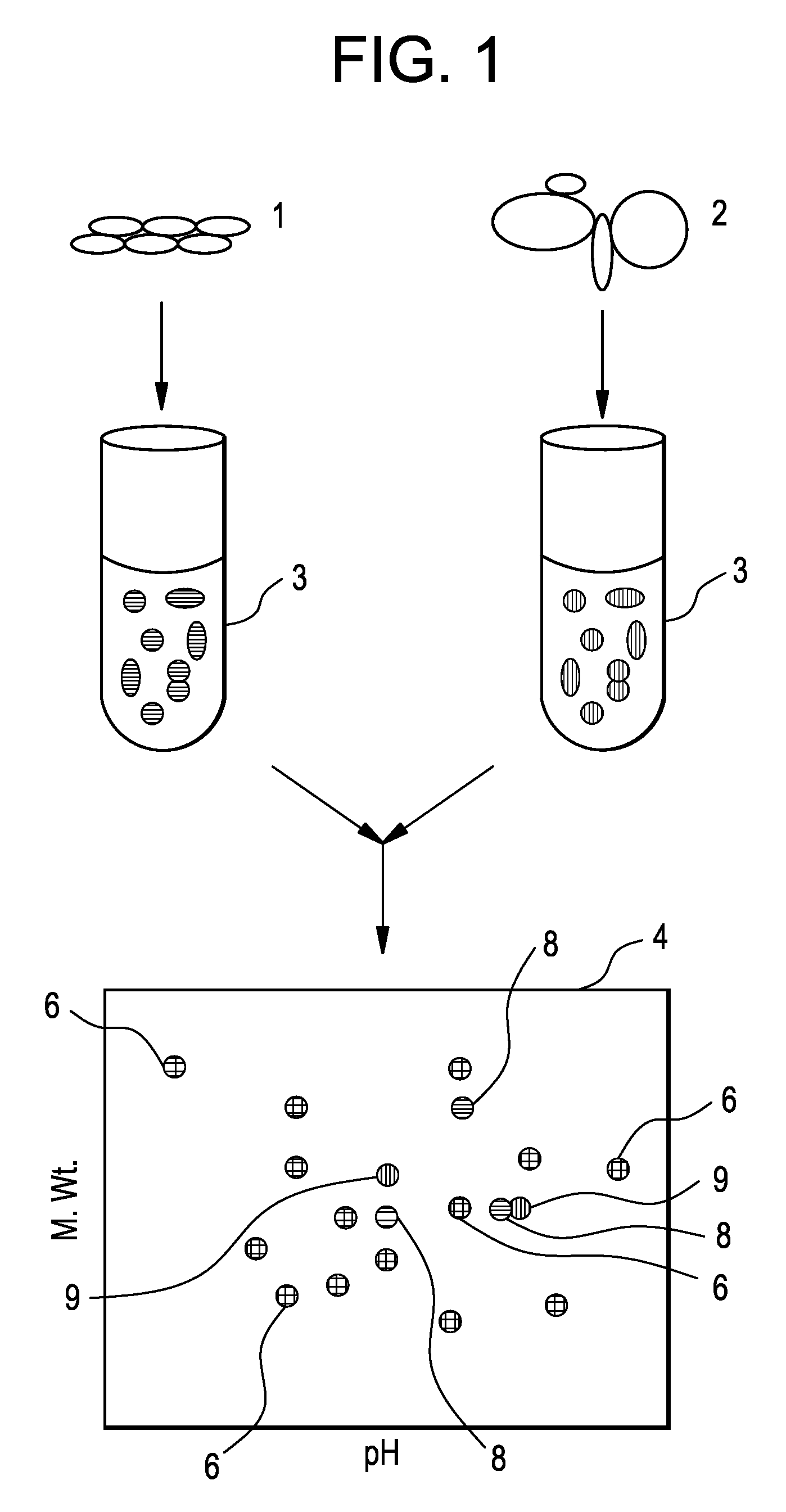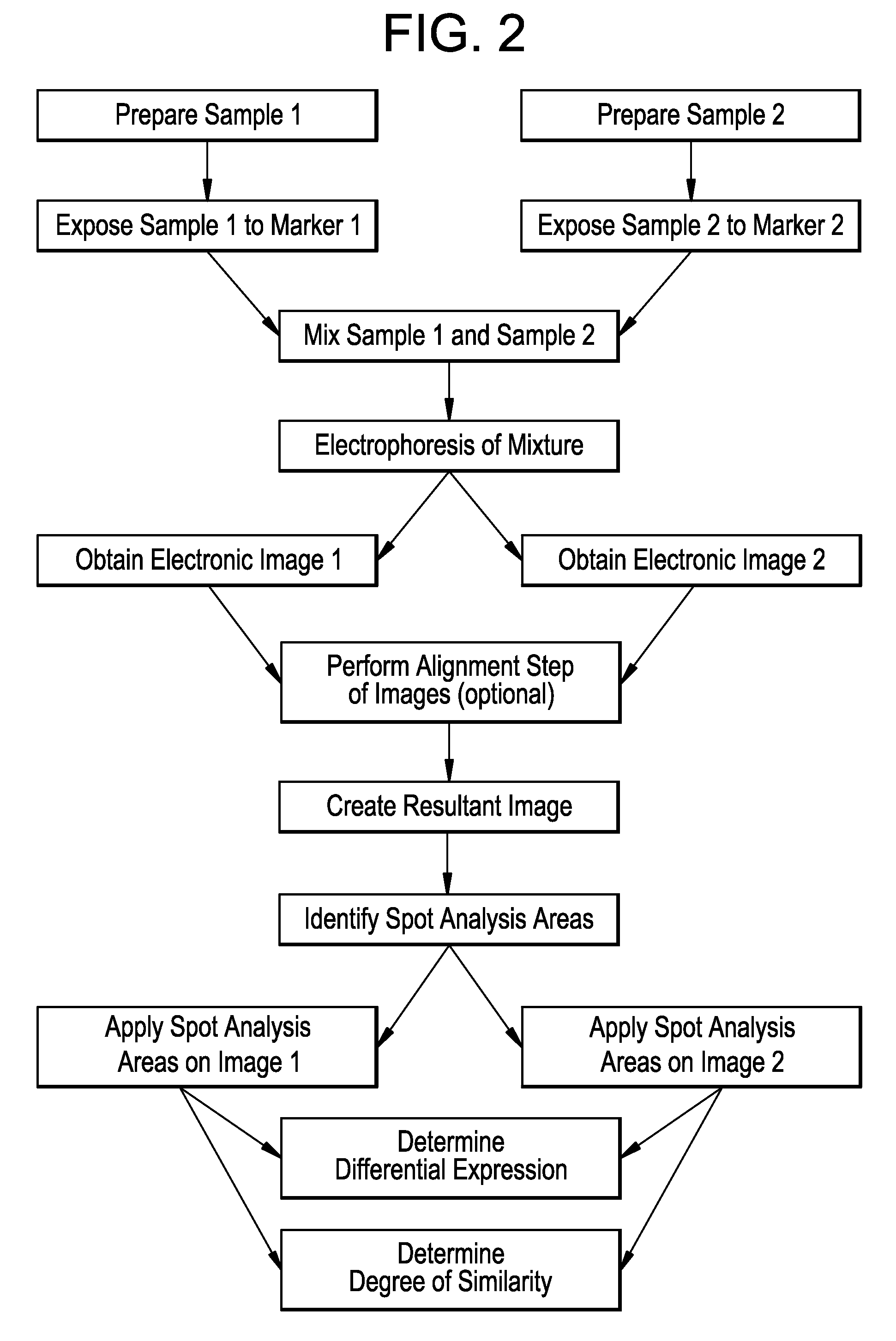Method of analysing cell samples, by creating and analysing a resultant image
a cell sample and resultant image technology, applied in the field of cell sample analysis, can solve the problems of mismatching of spots, inability to calculate the differential expression between two spots, and time-consuming above-described analysis steps, etc., and achieve the effect of less time-consuming analysis
- Summary
- Abstract
- Description
- Claims
- Application Information
AI Technical Summary
Benefits of technology
Problems solved by technology
Method used
Image
Examples
Embodiment Construction
[0034]FIG. 2 shows flow diagram illustrating the method according to the invention. The different steps illustrated in the flow diagram are described below with references to all the figures.
[0035]Throughout the description, in the example illustrating the invention is the separation step preferably performed by electrophoresis. However, the invention is equally applicable in any other separation method.
Preparation and Mixing Step
[0036]According to a preferred embodiment of the invention the process of the present invention employs a matched set of dyes wherein each dye in the set is generally equal to the other dyes in ionic and pH characteristics, and chemical reactivity for covalent attachment to proteins, yet fluoresces at a different wavelength, thereby exhibiting a different color luminescence when viewed. The dyes are preferably roughly equal in molecular weight, but need not be. Each one of the dyes within the matched set of dyes is used to label proteins in a different one ...
PUM
 Login to View More
Login to View More Abstract
Description
Claims
Application Information
 Login to View More
Login to View More - R&D
- Intellectual Property
- Life Sciences
- Materials
- Tech Scout
- Unparalleled Data Quality
- Higher Quality Content
- 60% Fewer Hallucinations
Browse by: Latest US Patents, China's latest patents, Technical Efficacy Thesaurus, Application Domain, Technology Topic, Popular Technical Reports.
© 2025 PatSnap. All rights reserved.Legal|Privacy policy|Modern Slavery Act Transparency Statement|Sitemap|About US| Contact US: help@patsnap.com



